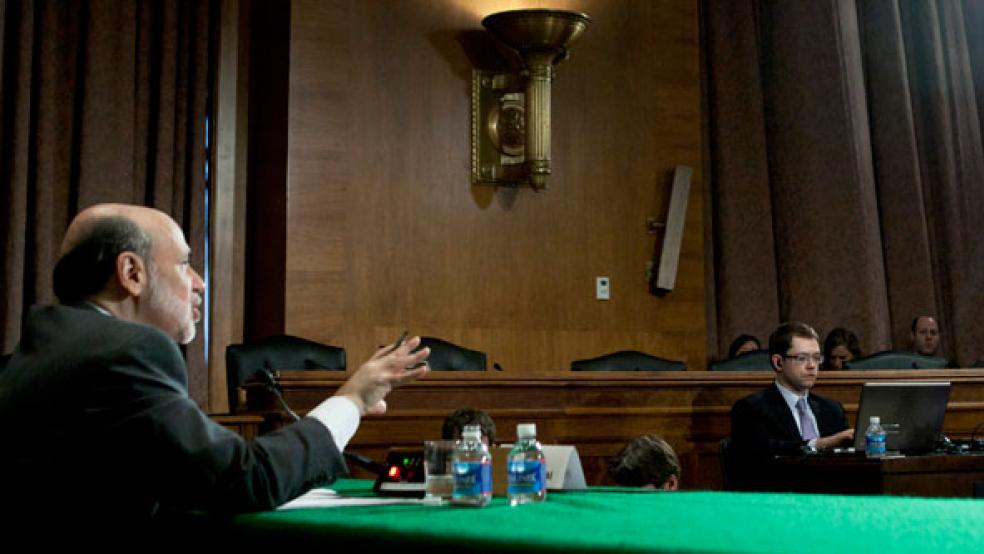When the Federal Reserve’s monetary policy committee meets this week, the debate over the future course of policy is likely to be heated. The recent news that the labor market is doing better along with other positive indicators for the economy will cause the inflation hawks on the committee to push even harder than they have to date for immediate interest rate increases. But the doves on the committee are not convinced we are free and clear of troubles. They are much less worried about inflation than the hawks and they will not be ready to ease up on the measures the Fed has put into place just yet. Some would like to provide even more help for the economy.
Who is correct? I side with the more dovish contingent. The economy is improving but the recovery is still on shaky legs and it’s too soon to withdraw stimulus measures. Core measures of inflation have been running below the Fed’s target, longer term inflation expectations measures do not reveal any concern about inflation, and I am convinced that the Fed has the tools it needs to prevent inflation.
The hawks are afraid that if they allow inflation to creep up, the inflation flood gates will open and they won’t be able to stop a repeat of the 1970s
And I do not understand the fear over inflation in any case. A temporary spell of inflation – inflation that overshoots the Fed’s target during the recovery and then returns to target when the economy is healthy again – would increase the cost of delaying expenditures and spur both consumption and investment, something that is very much needed to help the recovery along. Unfortunately, the hawks on the committee seem to be afraid that if they allow inflation to creep up even a little bit over their long-run target, the inflation flood gates will open and they won’t be able to help themselves from a repeat of the 1970s.
I have more faith in the Fed’s ability to control inflation than it has in itself, but to be fair, the fear is not entirely about resisting the inflation temptation. There is also a worry that once inflationary expectations become elevated they are very hard to bring down again, and the mere expectation of inflation can be self-fulfilling. But the real problem is that the Fed has not proven it can provide the inflation stimulus that is needed in the short-run while maintaining its long-run inflation target. Right now is an excellent time to show the public that temporary overshooting doesn’t have to lead to long-term inflation troubles. Once people realize the Fed will keep its word about the path of inflation, the Fed will no longer have to worry that the mistakes of the 1970s will limit its policy options.
Another reason to side with the doves is to avoid a loss of Fed credibility. The Fed has said that it will keep interest rates low through late 2014. There is an escape clause in the wording, but the public is interpreting this as a hard commitment, not a policy that is conditional on how fast the economy recovers. Failing to meet the public’s expectations would cause a harmful loss of trust.
There are serious questions about whether the recent gains can be maintained let alone whether the acceleration in the recovery that is needed to reach full employment will occur
However, the interest rate commitment isn’t quite as binding as it first appears. There are ways the Fed can begin tightening without reneging on its commitment to keep interest rates low through the end of 2014. For example, the Fed’s $400 billion “operation twist” program that attempts to reduce long-term interest rates is set to expire in June, and if the Fed doesn’t renew the program in some form, e.g. with the sterilized bond policy it has been discussing recently, that would tighten policy without changing the federal funds rate.
In addition, and more consequential, because the federal funds rate is stuck at the zero bound the Fed can begin selling the financial assets it is holding on its balance sheet without raising the federal funds rate. There is a point at which further sales would raise the federal funds rate, but the Fed can reduce its balance sheet quite a bit before this begins to happen.
Nevertheless, in my view it is still too soon to begin tightening in any guise. There is a lot of exuberance about the recovery at this point, but there are serious questions about whether the recent gains can be maintained let alone whether the acceleration in the recovery that is needed to reach full employment in an acceptable amount of time will occur. And an oil price shock or other inevitable bumps on the road to recovery pose additional worries. If I had my choice the Fed would be even more aggressive in its attempts to spur economic growth, to the point of elevating inflation in the short-run and then backing off as the economy approaches full employment. But in any case it’s still too soon to begin reversing monetary policy stimulus measures, especially when undue fear of inflation is main factor behind the push to begin tightening policy right away.






